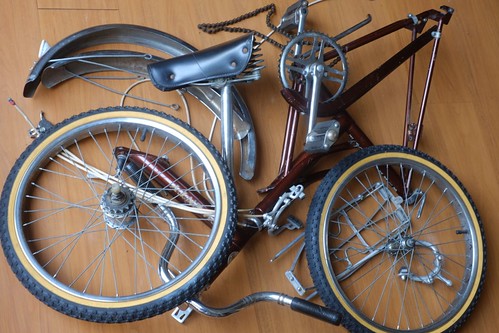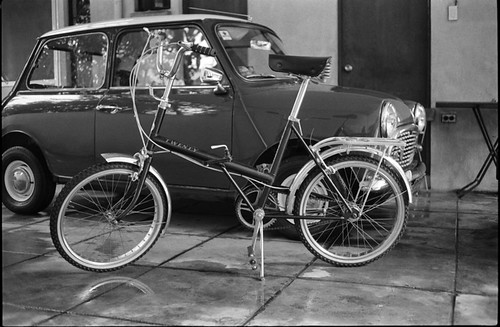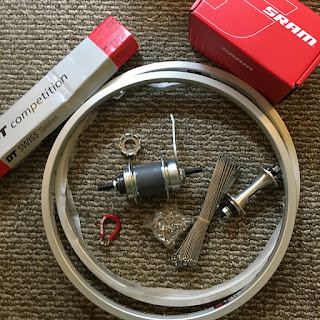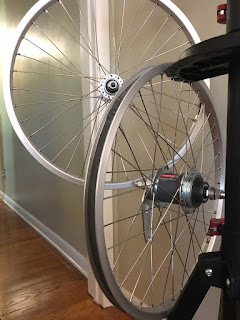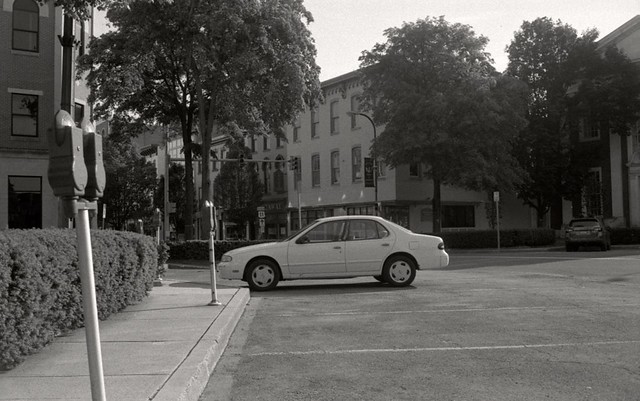Twenty three years ago, I built my first 2A3 amp in the basement of the very same house I'm staying in right now. This was a pair of PP2A3 amps with a Mullard-Style driver circuit pumping 8W per channel of pure Class A to drive 82dB/1W/1M (in)efficient BBC LS3/5As, with external preamplification.
As I enter another phase in life, I am back in the same house, mellower with age but hopefully wiser, building a single channel, single-ended 2A3 amp with 3.5W output to drive a 99dB/1M/1W efficient Altec 2-way horn system, with a phono and line stage on board.
This project started with a chassis and choke (amongst other things) handed over by Joe Roberts at the Capital Audio Fest last July. Additional parts were either donated by my hamfest/radio show buddy, Chong Ong or ordered online, like the Hammond 272X power transformer, which came from Steve at Angela Instruments. Back in the 90s, I could have built this amp (except for the output transformer) using parts sourced from hamfests and radio shows. But times have changed, sadly for this project, the only parts I got from a hamfest were the tube sockets ;(
I had been exchanging emails with J-Rob regarding the WE/Altec 32, Emilar horns/drivers, ROK idler TTs, viscous damped tonearms, vintage cartridges like GE RPX, Shure M3D, etc. Among the tubes he suggested I try in lieu of my favorite octal 6SL/SN7s and 5-pin 27/37 and 56/76s, which are getting quite expensive, are the Loktal equivalents + the "Mickey Mouse" plate and grid-capped 2C22/7193 med-mu triode.
WARNING: the 2C22 is not for the faint-hearted, there is over 200VDC in the plate cap if accidentally disconnected while the amp is operating!!!
WARNING: the 2C22 is not for the faint-hearted, there is over 200VDC in the plate cap if accidentally disconnected while the amp is operating!!!
As depicted in the above block diagram, this is classic (nothing new = boring) JE Labs ;) I used 2 x 7B6 loktals in the RCA derived RIAA phono stage sans variable EQ. A stereo > mono mixer via a WE111C repeat coil to process digital sources was integrated into the chassis, then a single medium-mu triode 2C22/7193 acts as a line stage preamp cap coupled to a Radiotron SE2A3 amp.
!!!WARNING!!!
The voltages found in this circuit can be lethal, build at your own risk!!!
The chassis was painted in Silver Hammerite, but wiring had to wait due to actual music making and more important projects ;)
Fancy-schmanzy boutique parts were not used in this amp - just plain old carbon resistors, paper in oil caps and electrolytics in the tube rectified/choke filtered power supply.
The amp section is currently fitted with a Noguchi PMF-15WS OPT I got in Akihabara. It sounds really good! You just have to take my word for it since I don't have a scope and audio generator to prove it ;)
At a later date I might swap in the PMF-10Ws, but ultimately I'd like to permanently install an American made OPT, maybe an Edcor or ask/beg Mike L. at Magnequest to wind a single TFA204 OPT just to keep the amp an ALL American classic ;)
At a later date I might swap in the PMF-10Ws, but ultimately I'd like to permanently install an American made OPT, maybe an Edcor or ask/beg Mike L. at Magnequest to wind a single TFA204 OPT just to keep the amp an ALL American classic ;)
Time Out
ala Turk








